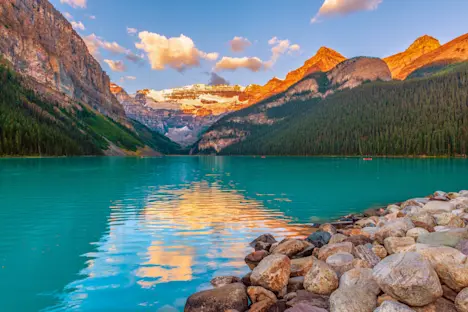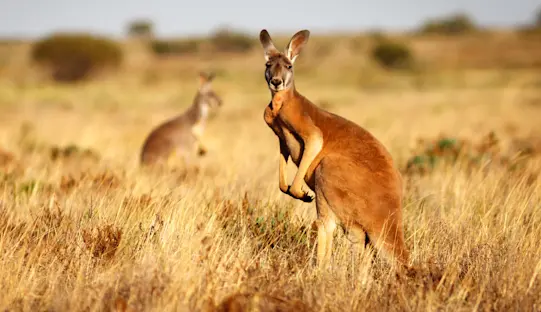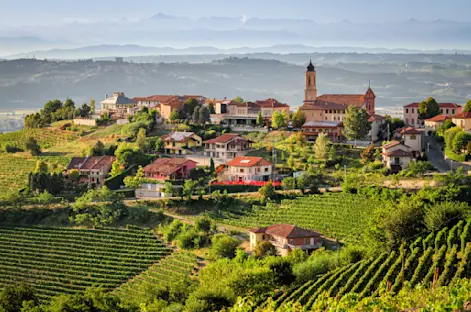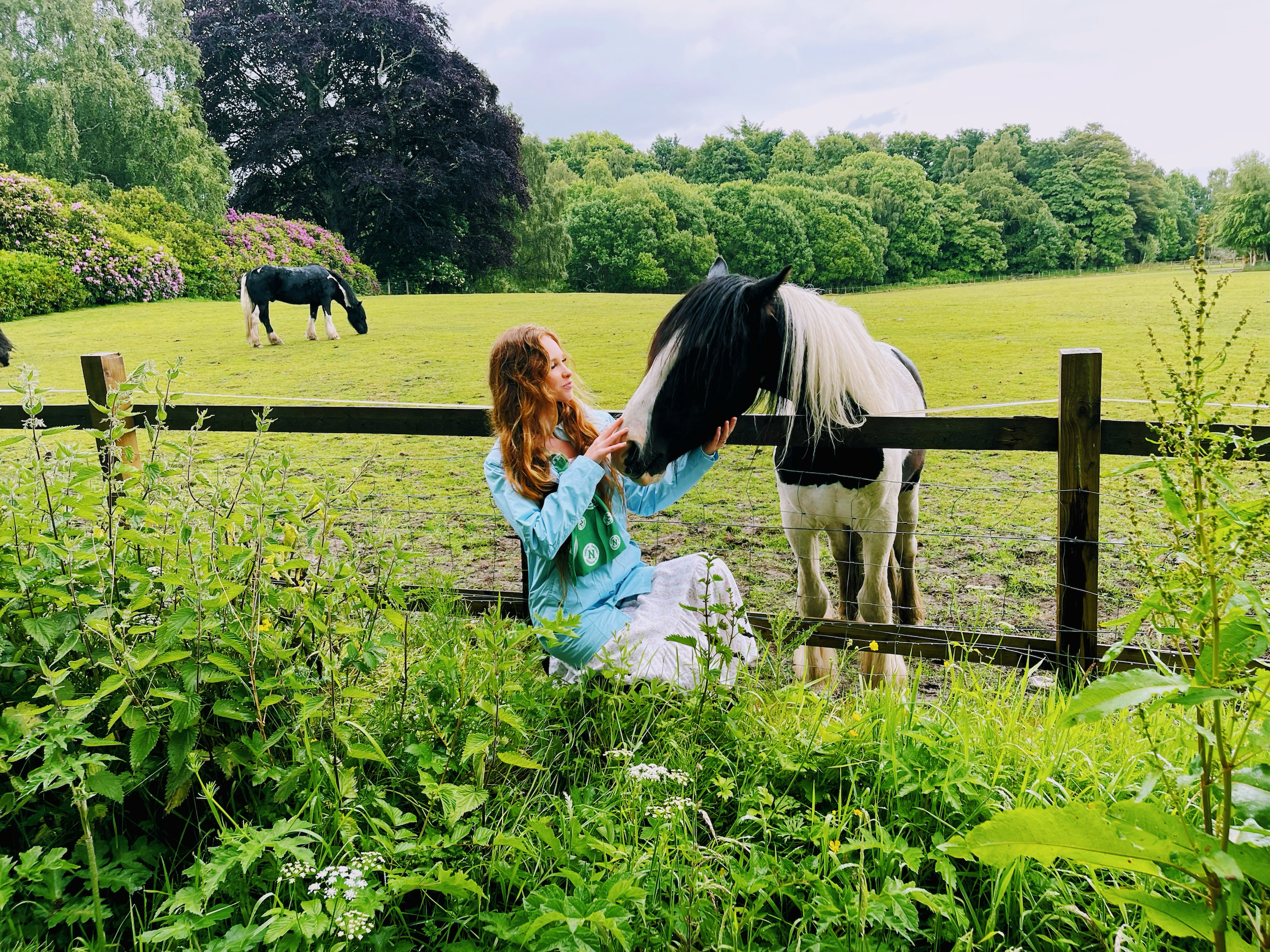“Let us step into the night and pursue that flighty temptress, adventure.”
―Albus Dumbledore, Harry Potter and the Half-Blood Prince
There’s a certain magic that envelops the Scottish Highlands—a blend of mist-shrouded mountains, enchanting lakes and fables whispered through generations. In June, my dad and I embarked on a delightful tromp through Scotland’s Wild Highlands & Islands with Natural Habitat Adventures, a journey that promised not just magnificent landscapes but also a deep dive into the rich folklore that permeates this ancient land.

All aboard the Hogwarts Express!
All Aboard the Hogwarts Express: The Jacobite Steam Train
“Anything off the trolley, dears?” —Harry Potter and the Sorcerer’s Stone
No trip to Scotland would be complete without a healthy dose of magic. Steam poured across the platform as Dad and I boarded the Jacobite, the real-life Hogwarts Express. We happily sipped on butterbeer before grabbing Bertie Bott’s Every Flavor Beans from the trolley and admiring my Chocolate Frog Card—Bowman Wright of Godric’s Hollow, credited with the invention of the Golden Snitch.
The scenery unfolded like pages from a book as the train chugged over the famed Glenfinnan Viaduct and passed the island that served as Dumbledore’s final resting place. After disembarking, we discovered Haggard Alley—a bustling Harry Potter shop tucked away down a wee alley in Mallaig. The enchantment continued in Edinburgh, where we explored the colorful shops of Victoria Street, the inspiration behind Diagon Alley (my favorite was the emerald-green bookstore that inspired Flourish and Blotts!). We even visited The Elephant House, the café where J.K. Rowling penned the early books, and lunched at The Witchery, a gothic candle-lit restaurant at the entrance of Edinburgh Castle.
Walking Among Fairies: Trails and Tales
“An area of lawn right in front of the castle had been transformed into a sort of grotto filled with fairy lights – meaning hundreds of actual living fairies were sitting in the rosebushes.” —Harry Potter and the Goblet of Fire

The Fairy Trail at Coul House
Surrounded by blooming azaleas, Dad and I wandered along the Fairy Trail at Coul House. Each twist and turn revealed surprises—tiny fairy doors at the base of trees, rings of mushrooms and the feeling that unseen eyes were watching. It was a gentle reminder of the Celtic belief that fairies inhabit the natural world around us.

Fairy Lore on the Isle of Skye
On the Isle of Skye, the crystal-clear waters of the Fairy Pools beckon. The pools’ vibrant blues and greens seemed otherworldly, and local lore says they are where fairies bathe under the moonlight. The nearby Fairy Glen is a miniature landscape of grassy, cone-shaped hills and mossy ponds. Legend has it that the area is a portal to the fairy realm. The Quiraing maintains a mystical allure as the home of fairies and dragons who ward off invaders. The flat plateau known as The Table is where fairies are said to convene. It’s warned that those who disturb them under a full moon may face dire consequences.

Animal Helpers
The crodh sith, or “fairy cattle,” are said to live in the sea and freshwater lochs on Scotland’s west coast and are known for their exceptional milk and butter. While we didn’t spot any, we saw plenty of red Highland cattle, affectionately dubbed Heilan coos! Two greeted me at Luskentyre Beach on the Isle of Harris, roaming on the cliffs above tide pools filled with starfish.
In Celtic mythology, red deer were considered fairy cattle, believed to be milked by fairies atop mountaintops. Spotting stags on distant mountains, we felt a brush with the mystical.

Per tradition, we poured fresh cream on top of Victoria sponge cake.
Forests Filled with Folklore
Walking through ancient woods with our guide from Trees for Life, a nonprofit working to restore the Caledonian forest, we encountered fairy hills—small mounds said to be entrances to the fairy world. Eating or drinking while in fairyland is a quick means to lifelong entrapment—you must abstain from meals while visiting if you wish to return home. However, one should always accept fairy food offered to us in our world, or risk offending the fairies’ hospitality. In folklore, the elderly Scottish woman Nanzy knew to graciously accept rolls of fairy butter, and a Devon ploughman happily drank cider gifted as a reward for mending a fairy’s broken baking peel. Here is a story our guide through the forest told:
“Two men were herding cattle near a fairy knoll. The first man had a proper thirst and wished for a glass of buttermilk. Just at that point, a hunkered lady in green appeared, offering buttermilk. The first man, growing suspicious, refused the drink, but the second man happily took the buttermilk to quench his thirst. A year and a day later, the chap that refused the buttermilk dropped dead for no particular reason. If you decline a gift, then it all comes to you. In a culture where you were living off the land a couple hundred years ago, everything was a gift, whether it came from nature or the fairies or the cattle that you milked. It was something to be valued and not wasted.”

Helpful Brownies
When visiting the thatched blackhouse to learn about crofting life in the Outer Hebrides, it was easy to imagine a brownie in the smokey haze, sweeping away the ashes from the peat fire or tidying the tartan blankets on the box beds. Brownies are benevolent household spirits in Scottish folklore, known for helping with chores and bringing good fortune to families. These small, hard-working beings often dwell in quiet corners of homes, barns and hearths, coming out at night to clean, mend or assist with farming tasks. In return, they expect only small offerings, such as a bowl of milk, cream or bread.

The Fairy Queen & Princesses
Walking through vast buttercup meadows and the emerald hills of Glen Shiel, I felt transported into the realm of the Fairy Queen. Scotland’s Fairy Queen, often associated with Queen Mab or the winter goddess Nicneven, is said to preside over magical beings such as elves, brownies, and pixies, dwelling in hidden realms like fairy mounds or forests shrouded in mystery. She is depicted as both enchanting and fearsome, capable of immense kindness to those who respect the natural world but quick to punish those who trespass or disturb her domain.
The Fairy Queen is frequently linked to tales of humans being lured into her world, where time flows differently. A notable legend involves Thomas the Rhymer, a 13th-century Scottish poet who was said to have been taken by the Fairy Queen to her kingdom, where he gained the gift of prophecy before returning to the mortal realm.
Scottish lore also includes references to fairy princesses, often daughters of the Fairy Queen. These figures embody grace and mystery, sometimes forming romantic relationships with humans but ultimately bound to their magical heritage. This includes a fairy princess who fell in love with a chieftain of Clan MacLeod, resulting in the creation of the Fairy Flag, a treasured relic said to possess magical powers times in times of great need that can still be found at Dunvegan Castle on the Isle of Skye.

I was particularly thrilled to later visit the Scottish National Gallery in Edinburgh to see “The Quarrel of Oberon and Titania” and “The Reconciliation of Oberon and Titania” by Sir Joseph Noel Paton, spotlighting the King and Queen of the Fairies from my favorite play, Shakespeare’s A Midsummer Night’s Dream, bringing the fairy lore full circle.
Giants: Legends Carved in Stone
“Giants are a very old breed, yeh see. They’re not as clever as they once were, but they’re still powerful.”
—Hagrid, Harry Potter and the Order of the Phoenix

Summer Solstice at the Callanish Standing Stones
Timing is everything. Arriving at the Callanish Standing Stones on the Summer Solstice felt serendipitous. Tents dotted the nearby campsites, and merrymakers with flower crowns and drums gathered for festivities. We approached the ancient stone circle on the Isle of Lewis, a ritual site since the Bronze Age. Some say the 5,000-year-old megaliths were giants turned to stone for refusing to convert to Christianity. Standing among them and placing my hands on the smooth surfaces, it’s easy to see why the site has inspired stories like those in “Outlander.” The energy was palpable, a mix of history and mystery under the lingering twilight of the solstice.

The Old Man of Storr
This towering rock formation stands sentinel over Skye’s rugged landscape. Some say it’s the remnant of a defeated giant, turned to stone in battle. Others whisper of friendly brownies and mischievous fairies that once roamed these hills. As we walked, the stories seemed to seep from the very rocks beneath our feet.

Kilt Rock (Creag an Fheilidh in Gaelic), a 300-ft wall of hexagonal rock.
Kilt Rock
Local legends added layers of enchantment to Kilt Rock and its waterfall that plunges into the sea. The tale of giants Fingal and Fiona living peacefully near Kilt Rock took a dramatic turn when Irish giant Fion McCool arrived unannounced. The legends don’t reveal what happened next, leaving us to ponder the mysteries that the sea might still hold.

Hiking between the Cuillins of Glen Sligachan with our Nat Hab Expedition Leader.
The Creation of the Cuillins
Our hikes between the Red and Black Cuillins of Glen Sligachan on the Isle of Skye were nothing short of spectacular. According to folklore, these mountains were formed when the Sun threw her spear into the ground, creating a blister that burst and spewed molten rock. Walking past these sleeping giants as skylarks sang against the piercing blue sky, among plants with witchy names—bell heather, sundew, butterwort, and spotted heath orchids—we felt connected to the ancient elements that shaped this land.
Of Selkies, Kelpies and Maritime Mysteries
“The narrow path had opened up suddenly onto the edge of a great black lake. Perched atop a high mountain on the other side, its windows sparkling in the starry sky, was a vast castle with many turrets and towers.”
—Harry Potter and the Sorcerer’s Stone

The Selkies of Loch Duich
Visiting Eilean Donan Castle felt like stepping into a storybook. Strategically perched on an island where three sea lochs meet, the castle has stood guard since the 13th century. We watched as a bride crossed the bridge to meet her groom sporting a tartan kilt, a scene that could easily have played out hundreds of years ago. Eilean Donan overlooks Loch Duich, the location of another darker love story. Three brothers stole the seal skins of three seal maidens, intending to make them their wives. The youngest brother, moved by compassion, returned his maiden’s skin. In gratitude, her father allowed him to visit her every ninth night. The other brothers weren’t so fortunate—the middle brother lost his wife when she reclaimed her skin, and the eldest tragically burned his wife along with her seal skin in a misguided attempt to keep her.
The Otter King and Hidden Treasure
We learned about a dratsie, or otter king, believed to be buried on Eilean Donan. Accompanied by seven black otters, the otter king could grant wishes if captured. Folklore says that his silver coat is hidden somewhere on the island, and whoever finds it gains immortality and invincibility. While otters are common here, we left the treasure undisturbed.
Kelpies: Shape-Shifting Spirits of Scotland’s Waters
Donning expedition suits and life jackets, we embarked on a thrilling RIB boat cruise in Moray Firth. This area is home to the world’s most northerly population of bottlenose dolphins, along with harbor porpoises and seals basking on the rocks. But I was sure to keep my eyes out for other, more magical inhabitants. Kelpies, among the most captivating figures in Scottish folklore, are mythical water spirits said to haunt the lochs and rivers of Scotland, which often take the form of beautiful, sleek horses with glossy black or white coats. Admire from afar, so they don’t drag you under!
Storm Kelpies in the Enchanted Isles
Cruising around the Shiant Isles was a highlight of our trip. Scottish Gaelic for “enchanted isles” and home to hundreds of thousands of seabirds—including a quarter-million puffins—the Shiant Isles felt like stepping into a National Geographic documentary. We had the special privilege of landing on an isolated shore, where a guillemot nest with eggs tucked into the cliffs caught our eye. The channel between the Shiant Isles and Lewis is known in Gaelic as Struth nam Fear Gorma, or “the Stream of the Blue Men.” Also known as storm kelpies, these blue mythical creatures raise powerful storms to capsize ships. The waves picked up as we ventured out, short-beaked common dolphins leaping out of the water, but we were granted safe passage through to our return journey—a rainbow arched across the sky during sunset as we cruised into Tarbert’s port.

Nessie: The Elusive Guardian of Loch Ness
No Scottish adventure is complete without seeking Nessie, the legendary Loch Ness Monster. After exploring the ruins of Urquhart Castle, perched dramatically above the loch, we boarded a high-speed RIB boat. The wind whipped our faces as we scanned the depths for any sign of the elusive creature. While Nessie remained hidden, we spotted nesting ospreys and eagles soaring overhead. The sheer expanse of Loch Ness, with its mysterious black water, made us understand why so many believe in the monster’s existence.
Guardians of the Forest: Druids, Ancient Trees & Festive Traditions
“The hall looked spectacular. Festoons of holly and mistletoe hung all around the walls, and no less than twelve towering Christmas trees stood around the room, some sparkling with tiny icicles, some glittering with hundreds of candles.”
—Harry Potter and the Sorcerer’s Stone

Paddling past patches of ancient Caledonian forest along the Beauly River.
We ventured into the remnants of the ancient Caledonian Forest, a landscape that once covered much of Scotland. Only 1% of this original pinewood forest remains. Conservationists from Trees for Life, a charity working to rewild the Scottish Highlands, guided us through groves of Scots pine, oak, holly and rowan—trees steeped in festive folklore.
Scots Pine: Scotland’s National Tree
Druids lit bonfires of Scots pine at the winter solstice to celebrate the sun’s return. Glades were decorated with lights, stars and shiny objects, the forerunners of our modern Christmas trees. The solitary Scots pine at the top of Doon Hill in Aberfoyle, Scotland, is a legendary tree that some believe marks the entrance to the Fairy Queen’s underground palace. Some say to make a wish by the tree or to run around it seven times to make the fairies appear. The Scots pine also serves as a plant badge for several clans, including the MacGregors, who wore the badge defiantly when tartans were outlawed after the Jacobite Rebellion.
The Sacred Oak & Mistletoe
The Druids revered oak trees, often conducting rituals in oak groves. In fact, the word Druid may derive from a Celtic word meaning “knower of the oak tree.” Mistletoe, the Druids’ most potent and magical plant, frequently grew on oak trees. The ritual of oak and mistletoe was a Celtic religious ceremony performed by the Druids to enact the plant’s miraculous properties as a cure for illness and an antidote for poisons. Scottish people still hang mistletoe in their houses to ensure good health in the new year.
Holly & Rowan: A Spell of Protection
Holly, with its spiny leaves and vibrant red berries, holds a special place in Scottish folklore as a symbol of protection and resilience. It was often planted near homes to ward off evil spirits, witches, and bad luck, as its sharp leaves were believed to repel malevolent forces. For the Celts, holly was sacred to the winter solstice, representing renewal and the enduring life force during the darkest days of the year. Harry Potter’s wand is made of holly wood because it symbolizes protection and resilience, which aligns perfectly with Harry’s character and his destiny to fight against Voldemort. The tree was also associated with the Holly King, a figure in ancient lore who ruled over the darker half of the year, battling the Oak King at the solstices for dominance over nature. In an enduring tradition, Scots decorate doorways, windows and mantels with holly during the holidays.
Rowan trees, with their bright red berries, were also believed to ward off evil. People planted them near homes and carried sprigs to protect against witchcraft. Druids used the bark and berries to dye ceremonial garments, and today, rowan berry jelly remains a Scottish delicacy. Many Scottish families still burn a twig from a rowan tree during the Christmas season to clear away conflict.
Rewilding for the Future
Restoring the Caledonian Forest not only revives the landscape but also provides habitat for wildlife like red deer, pine martens and the rare Scottish wildcat. It’s a living tapestry of history and hope, and Nat Hab Philanthropy is proud to contribute to this restoration initiative.

The Coat of Arms of King James I, located above the fireplace in the Royal Palace at Edinburgh Castle, displaying the Scottish unicorn, English lion and harp of Ireland.
The Unicorn: Symbol of Scotland
“Today he had managed to capture two unicorn foals. Unlike full-grown unicorns, they were pure gold…“Easier ter spot than the adults,” Hagrid told the class. “They turn silver when they’re abou’ two years old, an’ they grow horns at aroun’ four. Don’ go pure white till they’re full grown, ’round about seven.” —Hagrid, Harry Potter and the Goblet of Fire
Throughout our journey, the unicorn appeared as a recurring symbol in carvings, statues and heraldic designs. It is the national animal of Scotland—fitting in a land so rich with myths and legends.
In Celtic mythology, the unicorn was considered a creature of strength and healing, able to purify poisoned water with its horn and offer protection to those who sought it. During the reign of King James VI of Scotland, the unicorn was incorporated into the royal coat of arms, symbolizing Scotland’s independence and indomitable spirit.
Legends also tie the unicorn to the sacred and mystical. Stories tell of unicorns dwelling in hidden forests, visible only to those pure of heart. Some even suggest that unicorns once roamed the Caledonian Forest, their presence a blessing on the ancient woodlands. For centuries, the unicorn has inspired art and storytelling, serving as a reminder of Scotland’s enduring connection to the magical and mysterious.
A Farewell Filled with Music and Magic
“Ah, music,” he said, wiping his eyes. “A magic beyond all we do here!”
—Albus Dumbledore, Harry Potter and the Sorcerer’s Stone
On our final evening, we attended a traditional Gaelic ceilidh. Greeted by a roaring fire, the warm tones of fiddle music, and the welcoming aroma of homemade cakes and whisky, we felt instantly at home. A bagpiper played as stories and fables were shared, each guest invited to contribute. Dad delighted everyone with a cleverly crafted limerick, earning hearty applause.
As we bid farewell to newfound friends, I realized that the true magic of Scotland lies not just in its landscapes or legends, but in the shared experiences that become stories in their own right. That night, I fell asleep dreaming of hidden folk, stony giants, silvery steeds and all the wonders we’d encountered.

Eas a’ Bhradain Waterfall on the Isle of Skye
All photos © Emily Goodheart
A Highland Pilgrimage
By my dad, Henry Kautz
Twelve pilgrims gathered, o’er sea and land,
At Coul House, inn both warm and grand.
From distant shores they all did roam,
In search of Scotland’s ancient home.
With Simon, wise and full of cheer,
Their guide through Highlands far and near.
A Scottish sage, with heart so grand,
To lead them through this mystic land.
They sailed the dark and mystic Ness,
The loch of legends, fears to press.
When suddenly, the waters roared,
Nessie appeared, the great adored.
But Simon stood with eyes so bright,
And bade the creature take her flight.
With gentle words and ancient lore,
The monster fled to depths once more.
On Hogwarts’ train, they took their leave,
O’er glens and viaducts to weave.
At Glenfinnan, the shadows grew,
As Dementors came, a fearsome crew.
A red-haired lass then raised her wand,
Her Patronus cast, the dark beyond.
With silver stag, she drove them back,
The pilgrims safe, on Hogwarts’ track.
On Billy’s boat through storm they rode,
To Skye’s embrace, where legends bode.
The waves did crash, the winds did wail,
But Billy’s heart would never fail.
With Scotch in hand, their strength renewed,
To face the trials of Skye they queued.
The storm was fierce, yet they withstood,
With Highland courage, stout and good.
They hiked the Cuillins, red and black,
Through valleys deep and rugged track.
At Old Man Storr, they paused to rest,
The rock spoke out, the land’s behest.
A blessing from the ancient stone,
A whispered truth, to all was known.
With hearts inspired, they journeyed on,
The spirit of the Highlands drawn.
To Shaint Isles, they sailed anew,
Where seabirds soared in skies ‘nere blue.
Simon spoke with Puffin King,
A bond of peace their hearts did bring.
He left his pack, a token grand,
Of friendship forged upon the land.
The King of Puffins called a cheer,
As pilgrims left, their spirits clear.
Across Hebrides, they marched so bold,
To Callanish, the stones of old.
The stones did hum, the sky did flare,
Transported to a battle rare.
At Culloden’s field, they stood as one,
In Jacobite ranks, ‘neath setting sun.
The clash was fierce, yet in a blink,
They found themselves back on the brink.
In canoes they paddled, hearts so light,
To Warwick’s manor, festive night.
A ceilidh grand, with song and dance,
This poem recited, in joyous trance.
Yet when bagpipes did wail and drone,
The pilgrims fled, their ears to moan.
Lord Warwick’s tune, though meant for cheer,
Drove all away, from far and near.
Thus ends the tale of pilgrims twelve,
Through Highland paths and magic delves.
With Simon’s guide and courage true,
They braved the land neath skies ‘nere blue.

Foxgloves, believed to be the fairies’ favorite flower, and lupines are resplendent in June.

The Ross Fountain is an exquisite piece of Victorian cast-iron craftsmanship overlooked by Edinburgh Castle. Located in the heart of Princes Street Gardens, the fountain’s base sports mermaids, lions and cherubs. At the top are four female figures representing the arts, science, industry and poetry.

A traditional thatched cottage with a heather roof on the Culloden Battlefield, where the final Jacobite uprising came to a brutal head.

Highland cows graze on the machair above Luskentyre Beach on the Isle of Harris. The beach is cited as one of the most beautiful in the UK due to its white sand and turquoise waters.

We climbed the stone steps of Dun Carloway, one of the best preserved broch towers in Scotland. These stone roundhouses date from 2,300 to 1,900 years ago and were dwelling places for the principal family of the area.

Our rainy walk from Coul House in the wee village of Contin led us through a flowery fairy trail, buttercup meadows and forest paths to Rogie Falls, which cascades into the River Blackwater.

JK Rowling wrote the Harry Potter series at this cafe in Edinburgh, located on Victoria Street, often cited as the real-life inspiration for Diagon Alley.































